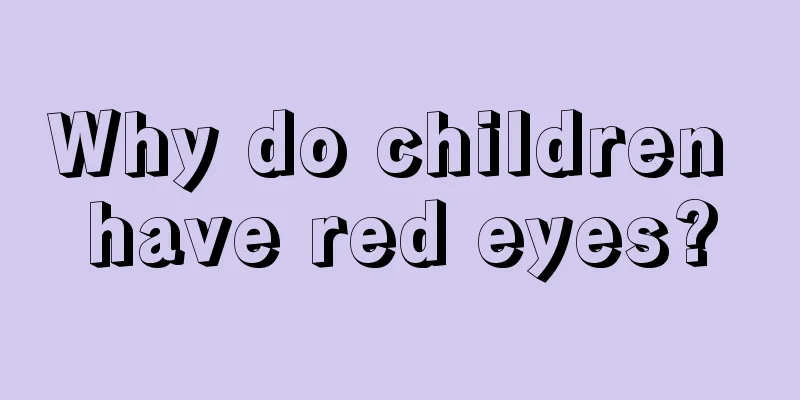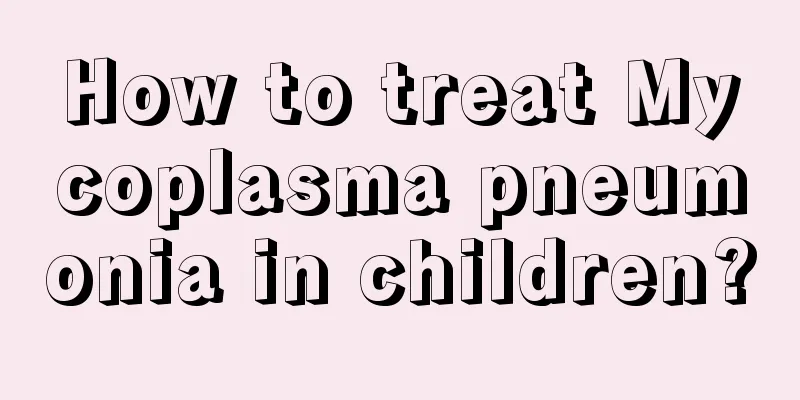What to do if the newborn has yellow eye discharge

|
It is a common phenomenon that newborns have a lot of eye mucus. As we just said, the external environment and dry eyes can lead to such a condition, but if it is not treated in time, it will lead to some conjunctivitis, lack of water in the baby's body and other such short-term problems. Let's take a look at what to do if the newborn has a lot of yellow eye mucus. Suspected cause 1: conjunctival inflammation After the baby is born, many parents are afraid that the child will catch a cold, so the room temperature at home is often high, and bacteria are easy to multiply. In addition, the newborn will unconsciously rub his eyes with his hands, which can easily lead to symptoms of conjunctivitis such as increased eye secretions and conjunctival congestion. If it is a serious bacterial infection, or a cold and fever occurs, symptoms such as increased secretions, increased tears, and congestion of the eyes will be more obvious, and may also cause redness and swelling of the eyelid skin. How to deal with it Topical antibiotic eye drops and ointments can improve symptoms, and conjunctival irrigation can help subside inflammation. Tips Before applying eye drops, the child's eyes should be cleared of secretions. If the baby also has symptoms such as dry stool, yellow urine, thick and greasy tongue coating, etc., Chinese medicine that clears heat and fire, and helps digestion and relieves stagnation can be used for treatment. Give your baby plenty of water, and pay attention to the effects of the milk powder on your baby's digestive function. Tips For breastfed infants, their mother's diet has a greater impact on their health. Breastfeeding mothers should maintain a balanced nutrition and avoid eating too spicy and greasy foods. Cleaning your baby's hands and trimming both adults and babies' nails regularly can reduce the chance of bacterial infection of the eyes. Suspected cause 2: Neonatal dacryocystitis Neonatal dacryocystitis is caused by blockage of the tear duct and nasolacrimal duct that excrete tears. Because the embryonic residual membrane at the lower end of the nasolacrimal duct has not degenerated, it blocks the lower end of the nasolacrimal duct, and tears and bacteria accumulate in the lacrimal sac under the skin at the inner corner of the eye, causing secondary infection. About 2% to 4% of full-term newborns have this residual membrane, most of which will shrink on their own within 4 to 6 weeks. Symptoms The baby's tears increase day by day, the tear river formed by tears on the lower eyelid margin widens, and a small lump appears on the skin at the inner corner of the eye. After squeezing out the liquid, the lump may disappear temporarily. If secondary bacterial infection occurs, yellow-white secretions will often appear at the corners of the eyes, and yellow-white purulent secretions may overflow from the squeezed bulges. How to deal with it Massage the lacrimal sac and nasolacrimal duct from the root of the nose to the tip of the nose to increase the pressure in the duct and promote the rupture of the residual membrane. When bacterial infection occurs, anti-infection treatment is given. When massage and conservative treatment are ineffective, probing can be performed after anti-infection treatment. Suspected cause three: gonococcal pyophthalmia Gonococcal pyophthalmia is caused by gonococcal infection, with an incubation period of 2 to 4 days. It is often caused by mothers suffering from gonorrhea, and the newborn is infected when passing through the birth canal. Both eyes are affected at the same time, manifesting as acute purulent conjunctivitis. Usually the child's eyelids will be extremely red and swollen, almost unable to open, and a large amount of pus-like eye discharge will be produced continuously. If not treated properly, corneal ulcers may occur, leading to corneal perforation and even the risk of blindness. How to deal with it Usually when a newborn is born, the hospital will use 1% silver nitrate solution to drop into the eyes to reduce the infection rate of the newborn. However, newborns delivered in informal hospitals have a greater chance of contracting the disease. Penicillin is effective for this disease. To avoid cross infection, you should go to a regular hospital for systematic treatment to avoid delaying the disease. Suspected cause three: gonococcal pyophthalmia Gonococcal pyophthalmia is caused by gonococcal infection, with an incubation period of 2 to 4 days. It is often caused by mothers suffering from gonorrhea, and the newborn is infected when passing through the birth canal. Both eyes are affected at the same time, manifesting as acute purulent conjunctivitis. Usually the child's eyelids will be extremely red and swollen, almost unable to open, and a large amount of pus-like eye discharge will be produced continuously. If not treated properly, corneal ulcers may occur, leading to corneal perforation and even the risk of blindness. How to deal with it Usually when a newborn is born, the hospital will use 1% silver nitrate solution to drop into the eyes to reduce the infection rate of the newborn. However, newborns delivered in informal hospitals have a greater chance of contracting the disease. Penicillin is effective for this disease. To avoid cross infection, you should go to a regular hospital for systematic treatment to avoid delaying the disease. Suspected cause 4: Corneal ulcer Corneal ulcers can also cause babies to have a lot of eye mucus, and their consequences may be the most serious. Corneal ulcers are mostly caused by accidental collision or when the baby unconsciously rubs his eyes with his hands, foreign objects, fingers or nails damage the corresponding part of the cornea, thereby becoming infected by bacteria. Babies who live in an unclean environment and have poor resistance are susceptible to this disease. Because of the pain, children often cry, are afraid of light and shed tears, are unwilling to open their eyes, have red eyeballs, and have secretions. Most parents cannot find the lesions, and even if they find small white spots on the black pupils of their children, they rarely realize the seriousness of the matter. How to deal with it Improper or untimely treatment of corneal ulcers can affect vision and even cause corneal perforation due to poor control of the lesion. Once a corneal ulcer is diagnosed, adequate antibiotics should be used immediately to control the infection and prevent the ulcer from expanding. During treatment, the medication must be applied locally to the eye and systemically at the same time. The above are the solutions to the problem of excessive eye mucus in newborns. They are all some drug treatment methods that can relieve the baby's heat. However, you must be careful when choosing the drugs, because some of them cannot be used after you are full. Secondly, you must also pay attention to the baby's physical abnormalities to avoid allergic reactions. |
<<: One month baby stool frequency and color
>>: What are the physical methods to reduce fever in children?
Recommend
Causes of mild cerebral palsy in children
Cerebral palsy is not unfamiliar to everyone, so ...
How to treat intestinal flatulence in newborns
Many parents have reported that their babies have...
What to do if your child has measles and fever
Children's bodies are very fragile and theref...
At what months can babies learn to sit?
During the growth and development of babies, pare...
What to do if your three-year-old child has knee pain
Children's bodies are relatively weak because...
The child has a high fever for three days
Some parents delay treating their children when t...
How long does it take for jaundice to subside?
If the baby has physiological jaundice, the jaund...
How to solve the problem of slow growth and development of children?
I believe many people have heard of the disease o...
Children's eyes always have tears
It is a very common disease in daily life that ch...
What causes excessive sweating in children?
Children always sweat a lot, which makes many par...
What are the causes of dark circles under children's eyes?
We know that the physical health of children is a...
Be alert to pediatric diarrhea in spring care for children, four types of pediatric diarrhea
Parents need to be patient when taking care of th...
Why does my child urinate frequently?
From a clinical perspective, if a child urinates ...
How to treat tinea pedis in children
Tinea pedis is a very annoying disease that cause...
Can acute hemiplegia in children be cured?
Acute hemiplegia in children is a brain disease, ...









